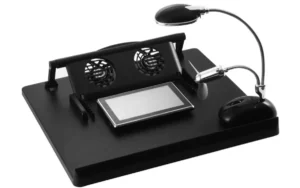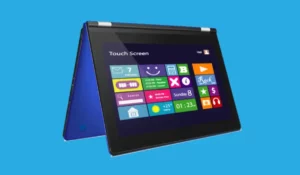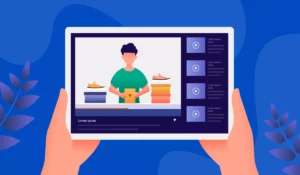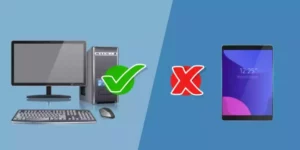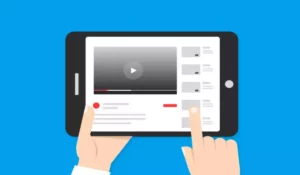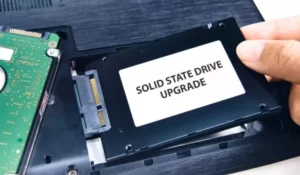Tablets are quite popular electronic devices thanks to their great versatility. There are different models built by different manufacturers, as well as variants in operating systems. These devices have unique features that can be beneficial for some users.
Tablets stand out for having touch screens. They are very comfortable and designed to be carried anywhere. For this reason, they are light, compact, and have very good battery autonomy. These devices allow you to surf the internet, watch videos, read and even play video games.
Of course, the peculiarities of a tablet depend on its category and its features. Here, we will analyze all the details of these devices.
What is a tablet?
Before starting, the most important thing is to know what a tablet really is. A tablet can be said to be a middle ground between a mobile phone and a laptop, both in size and features.
One of the pioneers in bringing tablets to market was Apple, with its popular iPad, which is still very popular today. In turn, many competitors have been emerging, such as Samsung, Lenovo, Asus, HP, and even Google and Microsoft themselves.
Tablets have undergone a great evolution over the years, finding themselves in more and more sizes and formats.
Features of a tablet
The specific characteristics of a tablet change depending on the model, brand, and generation. If we compare a current tablet with one of the first models that saw, the results will be very different.
Despite this, there are certain general features that distinguish these devices and, especially, that differentiate them from a smartphone or a laptop.
We will also mention which are its characteristics with respect to the current requirements.
Screen
The screen is the most important thing in a tablet and what makes it very flashy, both visually and because of the versatility it can offer. As we have said, tablets are somewhere between a smartphone and a laptop, so they are relatively medium in size.
In the market, we can find 7-inch, 9-inch, 10-inch, 12-inch, and up to 14-inch tablets. Therefore, what is considered small, medium or large is highly subjective.
But beyond size, what distinguishes a tablet from a laptop is that they have touch screens, just like a smartphone. Similarly, the display technology may differ depending on the price of the device.
The cheapest are LCD or LED, while the most expensive and those that provide the highest visual quality are AMOLED. There are also tablets with IPS panels, which offer vivid colors, and others with VA, which do not give such realistic tones, but the price is more accessible.
Operating systems
Again we can consider that tablets are the intermediate between a computer and a smartphone. However, in most cases, the mobile operating system is chosen for these devices, and therefore you will mostly see tablets with Android and iOS.
However, Microsoft has also joined in the manufacturing and commercialization of these devices, with its tablets that integrate Windows completely natively. In fact, Microsoft tablets are the only ones that use the same operating system as a conventional laptop.
Processor
The processor is the brain or engine of a tablet and the one that allows the execution of the programs. One of the essential traits of tablets is that they do not require as much processing power compared to a laptop.
Processing speed is highly variable, but at the same time efficient, given that almost all apps are optimized for these devices and consume fewer resources in their mobile version.
Most of the current tablets have an 8-core processor, which is more than enough for the everyday user.
RAM
RAM is the acronym for random access memory, that is, it is the one that is responsible for storing the data of an application while it is running. The higher the RAM capacity, the more smoothly the tablet will run. Not only that, but you will also be able to run multiple applications simultaneously.
The minimum amount of RAM that you can currently opt for is 2 GB, and that is to simply use basic applications. The standard is to buy a tablet with 4 GB, and 8 GB is ideal to never lose performance. It is even possible to buy tablets with 16 GB of RAM.
Internal storage
As the years have passed, applications have become heavier, as have videos, photos, and other types of files. At the time of their launch, most tablets had only about 8 GB or 16 GB of storage, but that has changed quite a lot nowadays.
The minimum storage for a tablet nowadays is 32 GB, with 64 GB being the standard and more than 128 GB the ideal. A high storage capacity gives you the opportunity to install more programs and save a wide variety of files without needing an external SD card.
Graphics card
Unless you are using the tablet to play video games, a video card is not a determining factor when purchasing one of these devices. Nevertheless, it is present in these computers, because it is essential to display images on the screen. Anyway, a simple graphics card is enough for most.
Connectivity
All tablets have wireless connectivity, both via Wi-Fi and Bluetooth. The standardization of data has made this feature essential, and it is one of the main reasons to buy a tablet. It is possible to connect to the internet from anywhere, as well as transfer files to other devices without requiring cables.
There are also some tablets that incorporate 4G or even 5G connectivity, although they have not been very widespread, since almost everyone prefers to use Wi-Fi. For connectivity through mobile networks, there are cell phones, but if you need it on a tablet, you will find models that support the use of SIM cards.
In the same sense, NFC is another very practical connectivity method to synchronize with other nearby devices. It is a very efficient option for executing electronic payments.
Camera
In the early days of tablets, the camera was not the highlight and only served a basic function. However, both current trends and needs have meant that the camera has had to be significantly improved, both in image quality and resolution.
Therefore, it is possible to use the tablet to take pictures, make videos or conduct high-quality remote videoconferences and meetings, without having to buy a specific video camera for it.
What are the advantages of a tablet?
Being in the middle of both devices, many users have the dilemma of whether a tablet is preferable to a smartphone or a laptop. In reality, the three devices are very practical and the truth is that they have unique advantages, and perhaps their application on a day-to-day basis is different.
In any case, here are the most important advantages of a tablet, especially for the everyday user:
1. Excellent portability
Although laptops and mobile phones are portable too, there is something that makes tablets special. They are lighter and more compact than a laptop, but also larger and more comfortable to use than a cell phone. Therefore, you can take a tablet with you on trips, use it on the subway, take it when you go camping, or use it at work meetings.
2. Great for reading
If you read frequently, whether for work or as a hobby, reading on a tablet is extremely enjoyable. On a laptop, the keyboard is cumbersome to deal with, and the phone can be too small to read for long periods of time.
A tablet has the optimal dimensions to have the device in front of the face for a long time. It also has a night mode and great compatibility with document formats, applications, tools, among others.
3. Ideal for scanning documents
There are several perfect applications for scanning documents, all of which work very well in view of the size of the screen. You can also transfer them from your computer to the tablet in an electronic format so you do not have to carry around paperwork or folders on a day-to-day basis.
4. Can run multiple applications simultaneously
To be able to open several programs at the same time on a laptop, a lot of hardware power is required. This is not the case with tablets, because their apps are very well optimized to consume resources very efficiently. Then, you just have to minimize the applications to use others, without having to close them.
In the same way, it is not required to frequently restart the tablet or turn it off completely, unlike a computer.
5. Excellent autonomy
As we have already said, tablets consume fewer resources, and therefore their autonomy also tends to be longer than that of conventional laptops. You can expect to use them continually for at least 8 hours without having to recharge the battery.
Obviously, high-end tablets can last up to a whole day without connecting them to a power outlet.
6. Great value for price
Tablets are generally affordable, much more compared to a laptop, while their price is not excessively higher than that of a smartphone. It is a very good option for those looking for a device with good performance, but without spending a lot of money.
Boost Your Business
Want more clients and sales? Our web development services will optimize your website to convert more visitors into customers.
Get Started TodayDisadvantages of tablets
Tablets are quite versatile, practical, and useful devices, but of course, they are not perfect. They also have certain drawbacks, such as not being comfortable for typing. Even the external keyboards that can be installed are not very comfortable to say.
They are also quite fragile and susceptible to drops, scratches, and general damage due to their delicate structure. Also, there may be limitations when surfing the web because there are web pages that are not optimized for mobile devices.
Main brands of tablets on the market
Having made clear its main characteristics and its pros and cons, it is time to talk about another crucial aspect: the manufacturer of the tablets. Buying a device from a certified brand is essential to ensure good performance and long life span.
Among the companies that lead the market are the following:
Apple
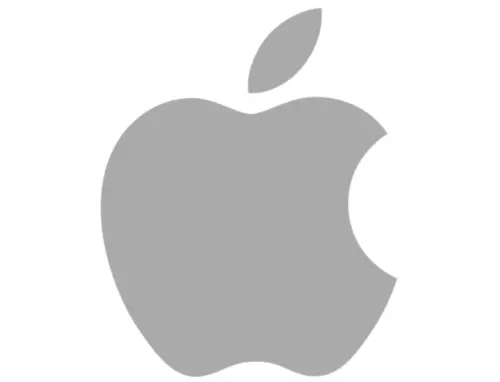
As we have said before, it was the pioneer company in the world of tablets. Everyone knows the tablets of the bitten apple, which have an original operating system, very intuitive and versatile.
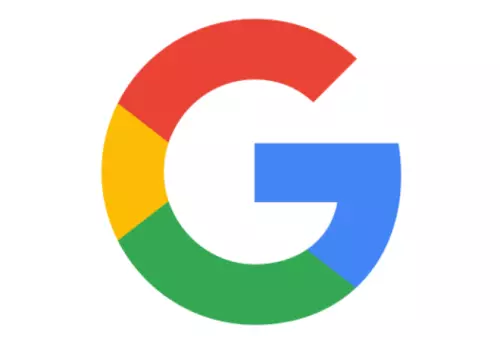
They are not so popular in the market but are used by somewhat more demanding people. As you can imagine, their operating system is Android and they are available in 7 and 10-inch sizes.
Samsung

Another of the leading brands and one of the main competitors of Apple, both in phones and other devices. It is a reliable manufacturer with several models that have earned the acceptance of users.
Microsoft

Currently, Microsoft makes the Surface, which is a kind of hybrid computer, because it combines a tablet with a laptop. On the one hand, it works like a traditional laptop, but if the lid is closed on the opposite side, it is just like a tablet to use with its touch screen.
Amazon

The world’s largest online store is not far behind and has its own tablets, which in turn have their own operating system: Kindle Fire, which is a modified Android. With them, it is possible to have access to the entire catalog of the Amazon application store, music, books, and streaming.
Ultimately, tablets came to the market to stay because they offer various unique benefits to many users.
Boost Your Business
Want more clients and sales? Our web development services will optimize your website to convert more visitors into customers.
Get Started Today

